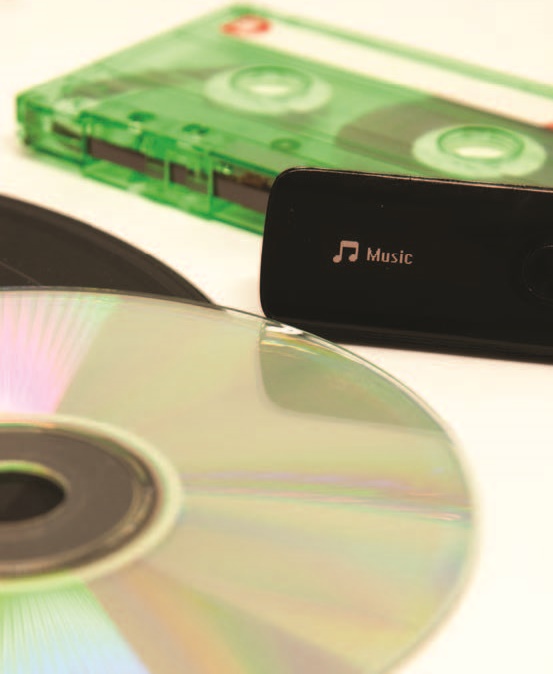These products should last you 10 years… and then some.
By Mark Stewart
I recently came across something online called the 10-Year Hoodie, which, as the name suggests, is guaranteed to last 10 years. It launched with a Kickstarter campaign that raised over $1 million dollars in, like, a day or something. My first thought was Wow, I’m definitely in the wrong business. My second thought was Wow, does anyone who wears a hoodie now still want to be wearing one a decade from now? That’s not the point, of course, or the calculation. It’s all about that magic number. There is something irresistible about the number 10—and it makes for a handy benchmark when you are considering investing in a product you’ll be using regularly in the foreseeable future.
In the mid-1970s, I specifically recall deciding that 8- track tapes were the right 10-year music format for me. My logic was flawless: Vinyl scratched too easily and cassettes were always having to be rewound or flipped over. Of course, the CD made all three obsolete within a decade. But for the record, digitized music also crashed the entire music industry within another decade, so ha-ha-ha. You know, in my teens and twenties, 10 years seemed like an eternity. It was half a lifetime or thereabouts. Now pushing 60, I realize that 10 years is more like a pebble glancing off the windshield of a full, rich life. Which reminds me, I think that chip in the windshield of my 19-year-old sedan is about 10 years old now. Probably time to call Safe-Lite. Nah. Let’s see if it gets worse.
I don’t want to make it sound as if I expect to live forever. The next 10 years are probably going to feel like dog years, and who knows what pet I’ll feel like during the 10 years after that. Consequently, my approach to purchasing household items has become a little different than it used to be: In this age of disposable everything, I have started to care about how long the new things I buy are likely to last. If I invest in a major appliance or an up-to-date automobile, I want to make sure that I won’t outlive it and then have to buy it all over again. That goes for a lot of other random stuff—belts, sunglasses, frying pans, pens and most of all hammers, because (don’t ask me how) I actually broke a hammer last year.
It’s an interesting question: How long should something, anything, last? What is a reasonable expectation for, say, a cordless weed-whacker or a panini-press or a desk lamp? And why did I bundle those things into one purchase on Amazon? How long will it be before the new trashcan I’ll be buying for the end of my driveway is itself going to have to be thrown away? (Also, how do you do that? Someone please email me—seriously, I’ve tried to do that five weeks in a row and I think the garbage men are just messing with me at this point.)
I was discussing this whole 10-year thing with a friend and she told me to look up a study done by something called Europa, which lists the household items that you can reasonably expect to last beyond 10 years. The first eight Google pages are about Europa the moon of Jupiter, with many suggesting “we should go there.” Once I found the correct search result, the Europa list was pretty clear: Household items that will absolutely last for 10 years or more include toilets, furnaces, and “appliances attached to the house,” which I took to mean refrigerators, dishwashers and dryers (ahem, Europa obviously didn’t check with me on dryers). This was informative, but not really what I was looking for.
After a little more digging, a bunch of texts and emails, plus a couple of real-live phone calls with people whose opinions I respect, I began to build the core of my list.
Here then is my shopping list of 10 gifts (for yourself or your loved ones) that should last a good 10 years…
A number of respondents pointed out that this would be a good “holiday” story—because there’s nothing more gratifying than spotting a gift you bestowed on a friend or family member that is still in use 10 years later. That’s not a hoodie.
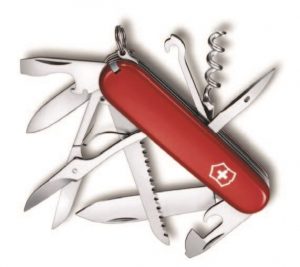
www.istockphoto.com
Swiss Army Knife • You know why the Swiss haven’t lost a war in over 600 years? Neither do I. But the next time around you can be sure that they will be bringing this iconic cutlery into battle. Switzerland began ordering them in the 1890s and since then Swiss Army Knife has become the second answer behind first-place “cheese” and ahead of third-place “the Alps” when Americans are asked, “What is the most famous thing about Switzerland?” I totally just made that up but I’ll bet it’s true. How handy and cool are the multiple gadgets that fold out of the knife? NASA astronauts have made critical repairs with them. Design-wise, the knife is part of the permanent collection of the Museum of Modern Art in New York. And, most importantly, MacGyver (but not MacGruber) used Swiss Army Knives all the time to wriggle out of life-and-death situations.
The 10 Year Plan: Victorinox, maker of the Swiss Army Knife, guarantees its product for life from material defects and issues of workmanship. The company will repair or replace it without charge. Oh, and they’re not just bright red anymore. The knives come in multiple configurations and in different colors and case materials—with almost every version priced under $100.
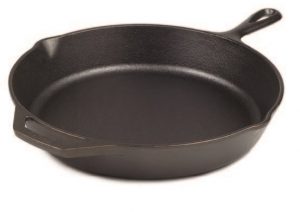
www.istockphoto.com
Cast Iron Skillet • As heavy as it is, the classic cast iron skillet is currently defying the law of gravity. Once a staple in every kitchen, it went into decline during the 1970s as flashier cookware came into vogue. But guess what? Cast iron is cool again and young people are buying it. And even if they end up using it sparingly, as every Three Stooges fan knows it does double-duty as a (bonk!) handy home-defense weapon. You can buy them old or new, pre-seasoned or unseasoned, and they can handle as much heat as you throw at them.
10 Year Plan: Are you kidding? If you take care of cast iron it can last for a century or more. Families have gone to war over who will inherit grandma’s skillet. Cast iron has been in use for direct-flame and oven cooking for 1,500 years. If you buy American, then Lodge is the company you’re looking for. The big ones sell new for under $50, but there’s nothing wrong with an heirloom pan if you find one at the right price. One final note: should you or your intended gift recipient already have a skillet, there are a number of other cast-iron food preparation options, including Le Creuset Dutch ovens, which run around $200 new.

www.istockphoto.com
French Press • Drip coffeemakers are strictly for drips. At least, that’s the general opinion of java aficionados who use a French press. Much of a quality coffee’s flavor is contained in its oils, which are mostly absorbed by paper filters. Coffee grounds in a French press are allowed to steep for several minutes after the boiling water is poured over them, releasing those oils, as well as a little extra flavor contained in the tiny, tiny grounds that squeeze up through the strainer when it’s plunged down. Occasionally, you’ll see bad press for a French press, and it’s likely to be related to the fact that it won’t filter out a molecule in coffee beans called Cafestol, which has been shown in some studies to affect the body’s ability to metabolize cholesterol. So do your homework to make sure this won’t be an issue for you or the recipient of your extremely thoughtful gift.
10 Year Plan: A high-quality glass French Press will last until you drop it. A high-quality steel one—though not as attractive—will easily last 10 years. The part that may need attention from time to time is the screen at the end of the plunger. Buy a good one, keep it clean and dry, and don’t plunge down with all your might. The double-walled polished-steel Frieling is considered by experts to be the Rolls Royce in the category, but at a little over $100 thankfully it’s priced more like a high-end BMW.
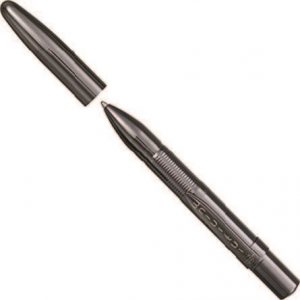
www.istockphoto.com
Infinium Space Pen • My wife has been hoarding Amazon rewards points and I think I know why. She plans to cash them in for a seat on Jeff Bezos’s rocket ship as soon as it’s ready for passengers. When that day comes, I am going to buy her an Infinium Space pen. Why someone needs to write while the earth whizzes past at 18,000 miles per hour I don’t know; perhaps she’ll just write me off at that point.
10 Year Plan: Fisher says its Infinium pen is unlikely to run out of ink in the average user’s lifetime. As someone who invariably picks up the only pen in the cup that has run out of ink, I believe $150 is a bargain. Also, the pen is guaranteed to write “anywhere, anytime, always.” (The editor in me thinks they could get rid of “anytime.”)
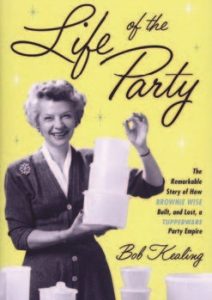 Tupperware • This is not your mother’s food storage system…okay, yeah, it is. But why mess with a good thing? The aisles of supermarkets, home goods stores and price clubs are jammed with collections of brand-name plastic food containers—often at temptingly low prices. But none of them come with a lifetime warranty or quality guarantee. It all began with a chemist named Earl Tupper back in the 1940s. He invented flexible, durable, unbreakable containers that wowed department store buyers. Unfortunately, the idea was so new (people mostly used glass containers with loose-fitting lids) that his product bombed at retail. Someone needed to explain and demonstrate what a game-changing product Tupperware was. Enter Brownie Wise, who invented the Tupperware Party— and pioneered a business model that created an income stream for stay-at-home spouses. Today that sales force numbers in the millions.
Tupperware • This is not your mother’s food storage system…okay, yeah, it is. But why mess with a good thing? The aisles of supermarkets, home goods stores and price clubs are jammed with collections of brand-name plastic food containers—often at temptingly low prices. But none of them come with a lifetime warranty or quality guarantee. It all began with a chemist named Earl Tupper back in the 1940s. He invented flexible, durable, unbreakable containers that wowed department store buyers. Unfortunately, the idea was so new (people mostly used glass containers with loose-fitting lids) that his product bombed at retail. Someone needed to explain and demonstrate what a game-changing product Tupperware was. Enter Brownie Wise, who invented the Tupperware Party— and pioneered a business model that created an income stream for stay-at-home spouses. Today that sales force numbers in the millions.
10 Year Plan: Everything Tupperware makes is built to last a lifetime, or the company will replace it. A couple of best-sellers are the one-touch canister set ($40), which has little windows that let you know when you’re running low on whatever’s inside, and the hamburger-press and keeper set ($34), which is self- explanatory. Everything is more expensive than the flimsy throwaway containers you see in the store, but it’s way, way better and, I’ll say it…weirdly retro.
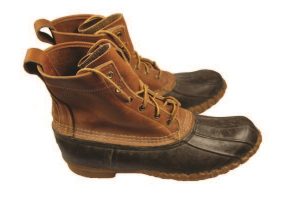
www.istockphoto.com
L.L. Bean Duck Boots • Speaking of weirdly retro, L.L. Bean has been making the same boot for 100–and-something years now and I would be surprised if they aren’t sold out for 2019 by the time you read this article. I’ve never heard of anyone throwing a pair away. The treated full-grain leather uppers repel rain and snow, while the rubber-treated bottoms make the boots puddle-proof. Each pair is hand-sewn and triple-stitched by folks up in Maine who must undergo six months of training before they let ‘em near a Duck Boot.
The 10 Year Plan: No one wears these every day, but even if you did and the boots failed years from now because of poor material or workmanship, the company would send you a new pair. There are multiple styles for men and women, many with extra performance features, starting around $100.
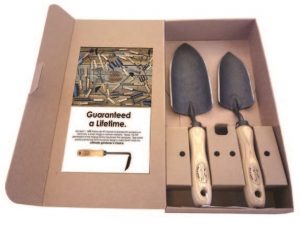 DeWit Garden Tools • These show up on a lot of “Best Of” lists for a reason: They probably are the best. Certainly, DeWit tools will easily make it to 2029 if they are not lost or stolen. That cannot be said of the less- expensive, mostly Made in China gardening tools at your local hardware store. Like the Lodge skillets, DeWit tools are made of indestructible cast iron. However, they are not manufactured in the USA. The company dates back to 1898 when a Dutch blacksmith named Willem de Wit opened a forge in the village of Kornhorn. Five generations later, Willem’s family is still running the business.
DeWit Garden Tools • These show up on a lot of “Best Of” lists for a reason: They probably are the best. Certainly, DeWit tools will easily make it to 2029 if they are not lost or stolen. That cannot be said of the less- expensive, mostly Made in China gardening tools at your local hardware store. Like the Lodge skillets, DeWit tools are made of indestructible cast iron. However, they are not manufactured in the USA. The company dates back to 1898 when a Dutch blacksmith named Willem de Wit opened a forge in the village of Kornhorn. Five generations later, Willem’s family is still running the business.
10 Year Plan: Everything DeWit makes is guaranteed forever. The family considers its tools “heirlooms.” That may be an overreach—we’re talking about gardening tools, after all—but I like the sustainability component of that word. We buy so much stuff that just gets thrown away, it’s nice to know my $60 planting trowel will still be around years from now after someone has planted me. And for the record, DeWit is sustainability-conscious, too. Their ash handles come from forests certified by the government’s Stewardship Council, which regulates the use of wood and replanting of trees in the Netherlands.
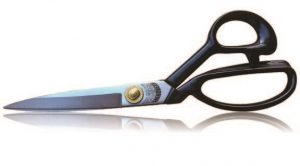
www.istockphoto.com
High-Carbon Steel Scissors • About 25 years ago, I covered the beauty industry for a West Coast business publication. For my first gig, they flew me out to Orange County on short notice and sat me across from Paul Mitchell (yes, that Paul Mitchell) at a business dinner. He was full of information, but honestly, I had no idea who he was, because he introduced himself as John Paul DeJoria (which is his legit name). We talked a lot about the new scissors coming on the market and I was stunned at the cost of a state-of-the-art salon-quality pair. A Japanese company was hawking them for $1,000 a pop and couldn’t make them fast enough.
“Wow,” I said. “That’s a lot of money for something I lose every day.” He didn’t get the joke.
10 Year Plan: So what should you pay for a pair of household shears that will look as good 10 years from now as they do today? Assuming you go with a high- leverage high-carbon steel pair, it should run you $50 or less. There are a number of brands to peruse (Vampire, Shun, Fiskars, Tangkula, Equinox—it’s a long list) and plenty of options in this price range, as different scissors do different things. Decide whether you want them for general use, for the kitchen, for art projects or for cutting fabric. And don’t make the same mistake I did. I once invested in an expensive pair of Kevlar shears thinking they were made of Kevlar. I loved the idea of scissors that could stop a bullet. Then I showed them to a work buddy and he asked when I would ever need to cut Kevlar. Cut Kevlar? Are you kidding me! The moral of the story is read the fine print. Or don’t be an idiot.

www.istockphoto.com
KitchenAid Mixer • A neighbor once said that losing her KitchenAid mixer would be like losing an arm. Being a wise-ass, I asked which of the dozen-or-so attachments laid out on the counter she would screw into her shoulder if that actually happened. “That’s a stupid question,” she responded without missing a beat. “They would all work. That’s the beauty of KitchenAid.” Touché.
10 Year Plan: Did you know that 2018 marked the 100th anniversary of the first stand mixer to carry the KitchenAid name? I’ll bet that mixer is still mixing. If KitchenAid made computers they’d probably put Apple out of business. The buy-in for a basic model is $250 to $300, with professional-grade versions going for twice that price.
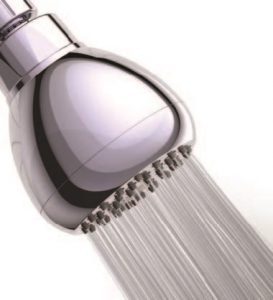
www.istockphoto.com
High-Pressure Shower Head • Is there anything more private and personal than buying a showerhead? Okay, there are a lot of things. But if you do your homework, you’ll find a handful that are true difference-makers and come with guarantees that they will still be working a decade from now. High-pressure heads do great things for the mind, body, and pocketbook. A recent survey of shower-takers (now there’s an interesting job) revealed that a powerful stream of water that covers the whole body makes for a more satisfying shower. I’m not sure a survey was required to tease out that fact, but it’s worth adding that high-pressure showerheads also reduce water usage significantly because they utilize air pressure to increase the sensation of water pressure. Most are simple to install and once you tinker a bit with settings they are easy to adjust.
10 Year Plan: Two showerheads that consistently score high in consumer ratings are the handheld model by Yoo.Mee and the standard, screw-on high-pressure head by Wassa. Both work well even when the water pressure is low, and feature silicone jets, which keep mineral deposits from accumulating and blocking the water flow. The Wassa comes with a lifetime guarantee—so technically this is your 10-year buy. Yoo.Me warranties its product for a year. Given that both sell for under $25, your investment either way is minimal. If you want to explore the higher end, there are models that creep into the hundreds, including systems that offer digital control of the length and temperature of your shower.
So there you have it. Ten great gift ideas for yourself or someone else. Gifts that will be used, appreciated and still be around a decade from now. The two takeaways are fairly obvious:
1) the classics are classics for a reason (they last and are often guaranteed to last) and
2) stick with the classics.

